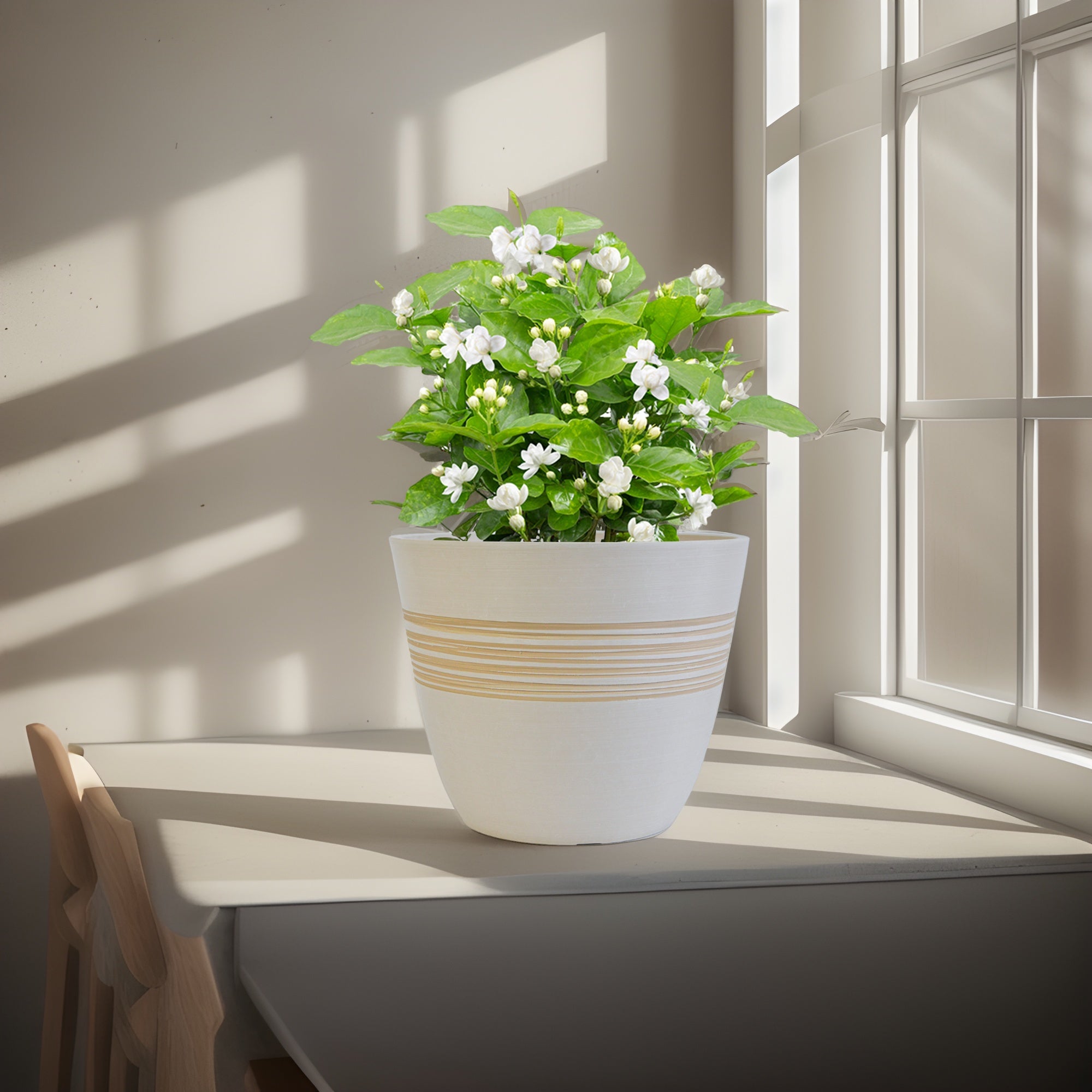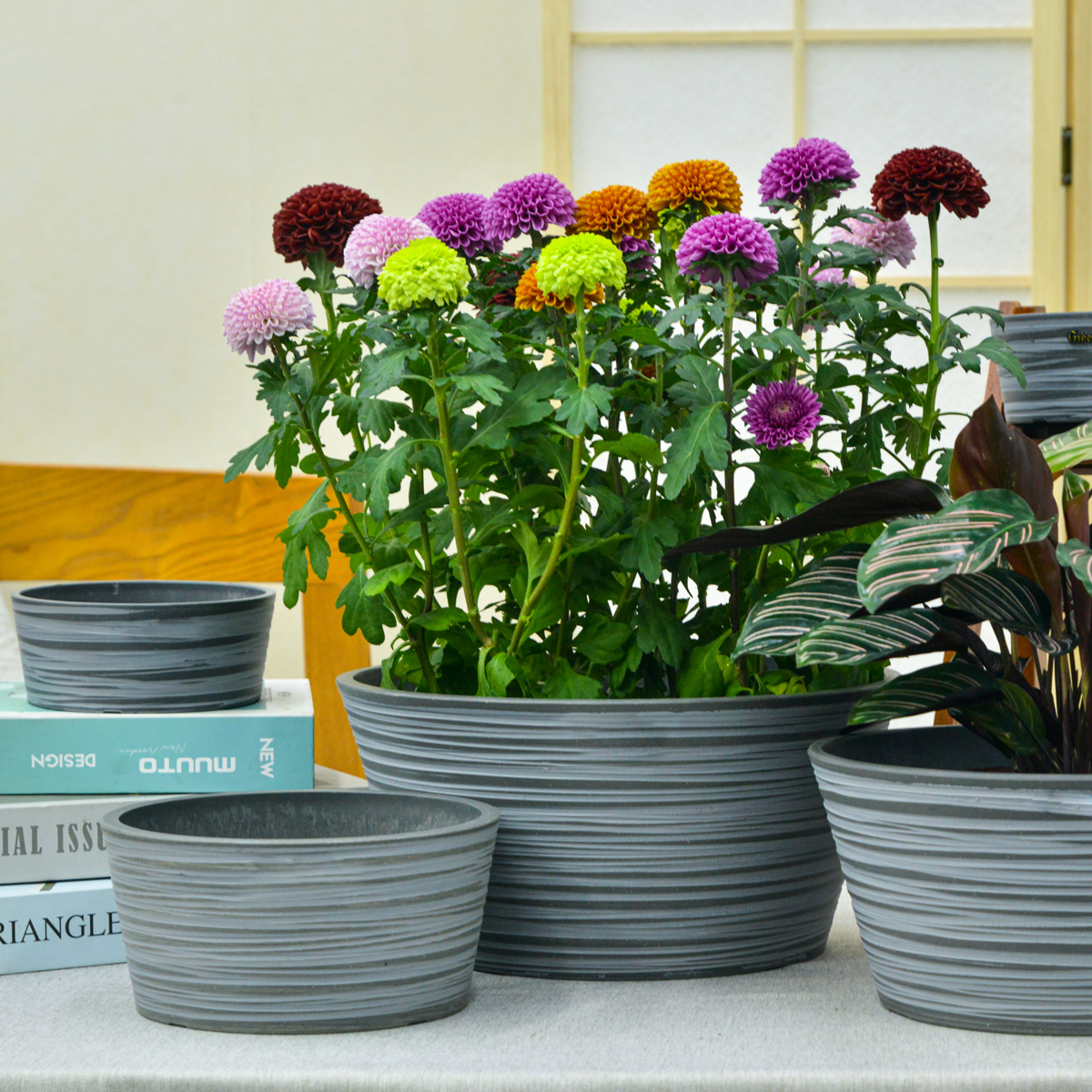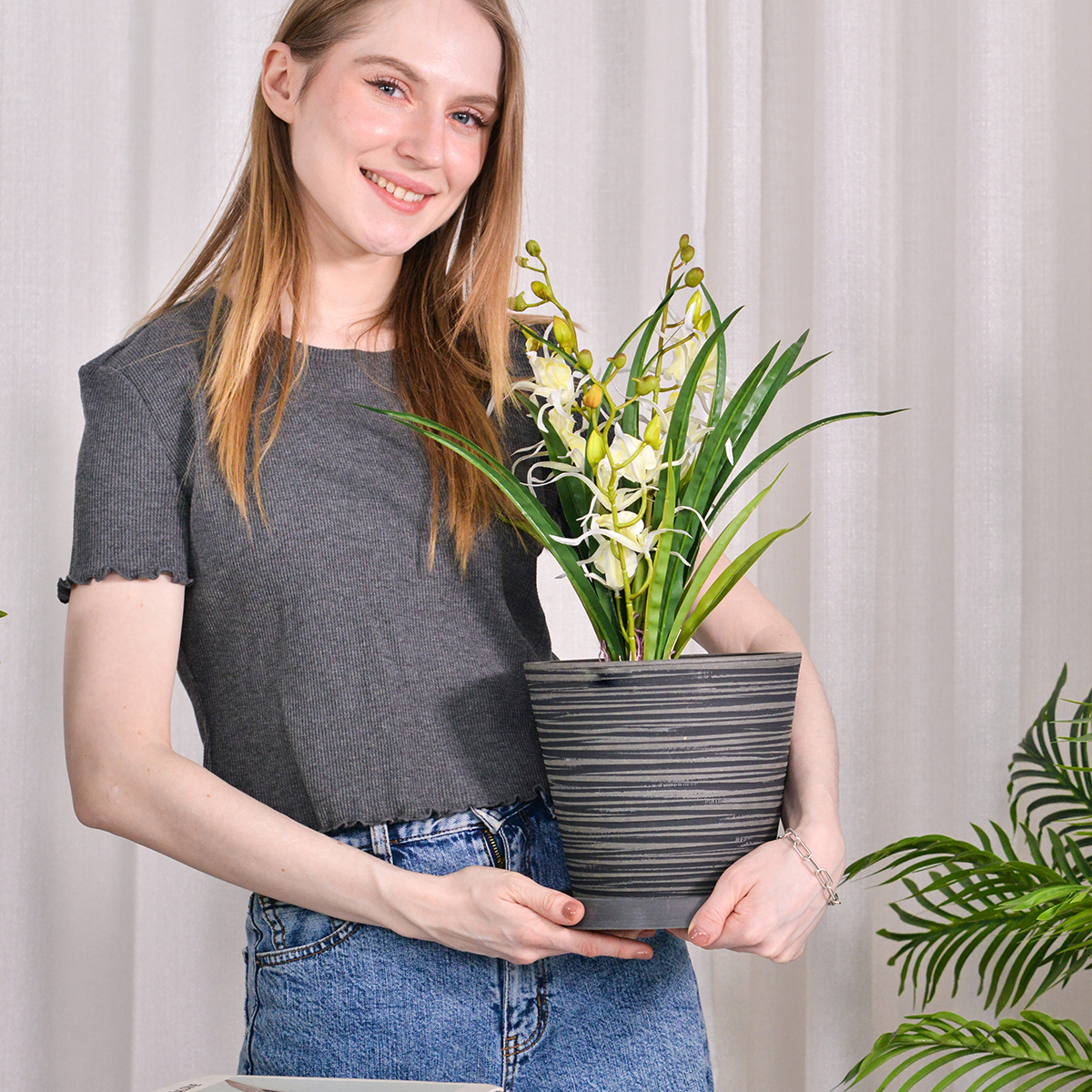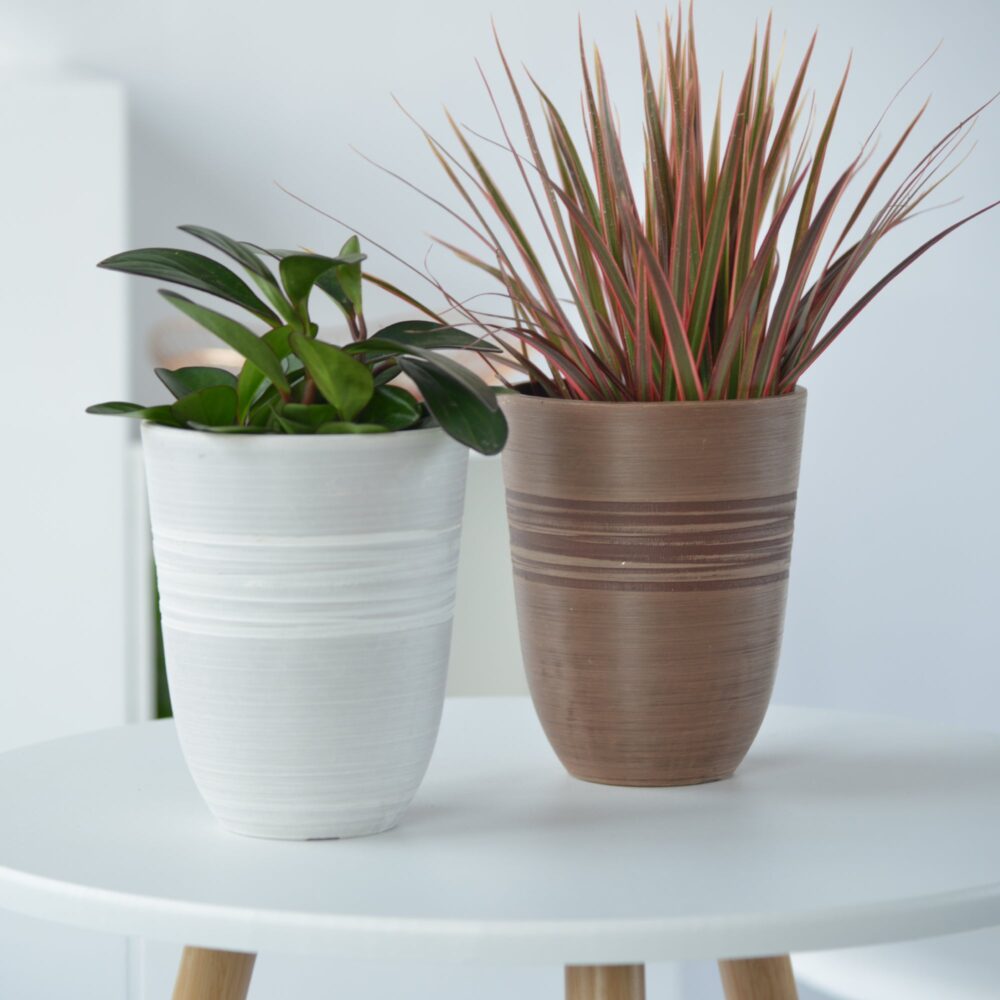Unlocking the Magical Power of Taro
Are you familiar with the soft and sweet taro on your dining table? Did you know that taro is not only a delicious food but also a plant full of treasures? From its nutritious rootstalk to its edible leaves and flowers, and its unique ornamental value, taro demonstrates amazing multiple values. Today, let’s unlock the magical power of taro together, and comprehensively understand this ancient yet modern crop from multiple perspectives such as cuisine, medicine, and horticulture!
This article will delve into the nutritional value, medicinal efficacy, planting techniques, and edible methods of taro, as well as its application in horticultural greenery, taking you to appreciate the all-around charm of taro, so that you can know taro better, love taro more, and make full use of taro!
A Culinary Delicacy on the Dining Table: Taro’s Nutrition and Deliciousness
Taro, as an ancient root crop, is deeply loved by people for its unique taste and rich nutritional value, and is a common delicacy on dining tables around the world:
Nutrient-Rich, a Healthy Choice
Taro is not only soft, glutinous, and sweet but also rich in various nutrients needed by the human body, making it an ideal choice for a healthy diet:
- Rich in Dietary Fiber: Taro is rich in dietary fiber, which can promote intestinal peristalsis, help digestion, and prevent constipation, which is beneficial to intestinal health. Dietary fiber can also increase satiety and delay blood sugar rise, which helps with weight management and blood sugar control.
- High Potassium Content: Taro is a good source of potassium, which helps maintain blood pressure balance, regulate heart rate, and maintain nerve and muscle function. Adequate intake of potassium is beneficial for preventing hypertension and cardiovascular diseases.
- B Vitamins: Taro is rich in vitamin B6, vitamin B1 and other B vitamins, which participate in important physiological processes such as energy metabolism, nerve function maintenance, and red blood cell production. Supplementing B vitamins helps maintain normal body function.
- Multiple Minerals: Taro also contains a variety of minerals such as calcium, magnesium, phosphorus, iron, zinc, copper, manganese, which play an important role in bone health, immune function, and enzyme activity.
- Low Fat, Low Calorie: Compared with root crops such as potatoes and sweet potatoes, taro has relatively low fat content and calories, making it more suitable for people who need to control their weight.
- High Starch Content: The main component of taro is starch, which provides energy and also gives taro a soft and glutinous texture. However, the starch granules of taro are small and easier to digest and absorb, making it easier to digest than other starchy foods.
Diverse Cooking Methods, Unique Flavor
Taro can be cooked in various ways, such as steaming, boiling, frying, roasting, stir-frying, stewing, etc. Different cooking methods can showcase different flavors and textures of taro, meeting the taste needs of different people:
- Steaming and Boiling: Steamed taro can maximize the original flavor and nutrients of taro. The taste is soft, glutinous, and sweet, suitable for people who pursue a healthy diet. Taro rib soup, taro porridge and other soups and porridge cooking methods can perfectly combine the softness and glutinousness of taro with the deliciousness of the soup. They are warm and nourishing, and rich in nutrition.
- Frying: Fried taro strips, fried taro balls and other frying methods can give taro a crispy skin and soft inside. The taste is rich and diverse, and the aroma is overflowing, making them delicious snacks for all ages.
- Roasting: Roasted taro can make the taro slightly charred on the outside and soft, glutinous and sweet on the inside, with a unique flavor. Oven roasting or charcoal roasting are both acceptable.
- Stir-frying: Stir-fried taro slices, stir-fried taro chicken cubes and other stir-fried dishes can integrate the softness and glutinousness of taro with the freshness of meat, making them nutritious and delicious with rice.
- Desserts: Mashed taro, taro balls, taro cake and other desserts are classic ways to eat taro. Mashed taro is delicate and dense, sweet and delicious. Taro balls are Q-bomb and glutinous, with a rich texture. Taro cake is soft, glutinous, and chewy, suitable for both sweet and savory tastes.
- Staple Food Substitute: Taro has a high starch content and can partially replace staple foods such as rice and馒头 (mantou – steamed buns), increasing dietary fiber intake and controlling calorie intake, making it healthier. Taro chunks can be cooked with rice to make taro rice, or steamed taro can be eaten directly.
Time-Honored Medicine: Taro’s Medicinal Value and Efficacy
In addition to its delicious edible value, taro also occupies an important position in traditional medicine. It is considered to have multiple medicinal effects and is a good food and medicine homologous product:
Records in Traditional Chinese Medicine Classics
In Chinese traditional medicine classics, the medicinal value of taro has long been recorded:
- Ben Cao Gang Mu (Compendium of Materia Medica) records that taro “replenishes deficiency and widens the intestines, resolves phlegm and dissipates nodules, स्वादु (sweet), 平 (neutral).” It is believed that taro has the effects of tonifying physical weakness, widening the intestines, and resolving phlegm and dissipating nodules.
- Ming Yi Bie Lu (Records of Famous Physicians) records that taro “mainly treats epigastric pain, quenches thirst, cures vomiting, regulates the middle and replenishes deficiency.” It is believed that taro can relieve epigastric pain, quench thirst, treat vomiting, regulate the spleen and stomach, and replenish deficiency.
- Dian Nan Ben Cao (Herbal of Southern Yunnan) records that taro “treats scrofula phlegm nodules, stops coughs, relieves abdominal pain, and eliminates swelling.” It is believed that taro can treat scrofula phlegm nodules, stop coughs, relieve abdominal pain, and eliminate swelling.
Confirmation by Modern Research
Modern medical research has also gradually confirmed some of the medicinal potential of taro:
- Enhance Immunity: Taro contains polysaccharides, saponins and other active ingredients, which are believed to have the effect of enhancing immunity, which can improve body resistance and prevent diseases.
- Antioxidant: Taro is rich in polyphenolic compounds and other antioxidants, which can scavenge free radicals in the body, delay aging, and prevent chronic diseases.
- Assist in Lowering Blood Pressure: Taro is rich in potassium and low in sodium, which is in line with the principle of a high-potassium, low-sodium diet, which helps maintain blood pressure balance and assist in lowering blood pressure.
- Assist in Lowering Blood Sugar: Taro is rich in dietary fiber, which can delay blood sugar rise. Some studies have shown that certain components in taro may have the effect of assisting in lowering blood sugar, but more research is still needed to confirm this.
- Anti-tumor (Potential): Some in vitro experiments and animal experiments have shown that taro extracts may have certain anti-tumor activity, but it is still in the preliminary research stage, and there is no sufficient human experimental evidence, and it cannot be used as an anti-tumor drug.
- Other Potential Effects: Some studies have also found that taro may have potential effects such as anti-inflammatory, antibacterial, antiviral, and protecting gastric mucosa, but most are in the preliminary research stage and require more in-depth research to verify.
Both Medicinal and Edible
Taro is homologous to medicine and food, with mild medicinal properties. It can be eaten as food or used as medicine. Taro can be part of the daily diet and used for health preservation through diet therapy. It can also be used as an ingredient to assist in treating certain diseases under the guidance of a doctor. Common medicinal and edible methods include:
- Porridge Cooking: Taro porridge is easy to digest and absorb and rich in nutrition. It is suitable for people with spleen and stomach weakness, indigestion, and physical weakness after illness. It has the effect of strengthening the spleen and stomach and replenishing the body. It can be paired with ingredients such as red beans, yam, and lotus seeds to enhance the medicinal diet effect.
- Soup Stewing: Taro rib soup, taro chicken soup and other soups are fresh and nourishing. They are suitable for people with weak constitution and low immunity. They have the effect of tonifying qi and blood and enhancing immunity. It can be paired with medicinal materials such as Codonopsis pilosula Astragalus propinquus Chinese wolfberry to enhance the medicinal diet effect.
- External Application: Fresh taro can be mashed into a paste and applied externally to carbuncles, boils, scrofula phlegm nodules and other affected areas. It has the effect of reducing swelling and dissipating nodules, detoxifying and relieving pain. Note that some people may be allergic to raw taro. Skin testing is required before external application.
New Favorite of Home Gardening: Taro’s Ornamental Value and Planting Fun
In recent years, in addition to its edible and medicinal value, the unique ornamental value of taro has gradually been discovered and loved by people, becoming a new favorite of home gardening:
Unique Leaf Shape, Full of Greenery
Ornamental taro is a taro variety specifically used for ornamental purposes. Compared with edible taro, ornamental taro focuses more on the ornamental value of leaves. The leaves of ornamental taro are large, uniquely shaped, and colorful, with extremely high ornamental value:
- Diverse Leaf Shapes: The leaf shapes of ornamental taro are varied and colorful, with various shapes such as heart-shaped, shield-shaped, halberd-shaped, and palmate. The leaf edge can be wavy, serrated, pinnately lobed, etc. The leaf veins can be clearly raised and brightly colored. Different leaf shapes give ornamental taro unique personality charm.
- Rich Leaf Colors: The leaf colors of ornamental taro are gorgeous and colorful. In addition to common green, there are also various colors such as white, yellow, pink, red, purple, and black. Even multiple colors can appear on the same leaf. Leaf colors can be in various forms such as solid color, spots, stripes, and vein patterns, colorful and highly ornamental.
- Beautiful Plant Shape: Ornamental taro has an upright plant shape and stretched leaves, with a tropical rainforest style. It is full of greenery and vitality and is an excellent indoor foliage plant. It can be potted to decorate the home environment, or planted in the garden to create a tropical landscape.
Numerous Varieties, Rich Choices
There are many varieties of ornamental taro. There are countless varieties of ornamental taro common in the horticultural market. Leaf shape, leaf color, and plant shape each have their own characteristics, meeting the aesthetic needs of different gardening enthusiasts:
- Classified by Leaf Color: Common types include green leaf taro, white leaf taro, yellow leaf taro, red leaf taro, black leaf taro, caladium, etc. Caladium is the most colorful ornamental taro variety. Multiple colors and textures can be presented on the leaves at the same time, which is of great ornamental value. Black leaf taro is known for its mysterious black leaves. The leaf color is deep and stable and very individual.
- Classified by Leaf Shape: Common types include heart-leaf taro, shield-leaf taro, halberd-leaf taro, palm-leaf taro, etc. Heart-leaf taro has heart-shaped leaves. The leaf shape is round and full, cute and charming. Shield-leaf taro has shield-shaped leaves. The leaves are upright and grand and full of domineering.
- Classified by Plant Shape: Common types include dwarf type, medium type, tall type, etc. Dwarf ornamental taro has a small and compact plant shape, which is suitable for potting and decorating desktops, balconies and other spaces. Tall ornamental taro has a tall and stretched plant shape, which is suitable for planting in gardens to create a tropical landscape.
Easy to Plant and Maintain
The planting and maintenance of ornamental taro are relatively simple and easy. They have strong adaptability to the environment and are very suitable for home gardening. Even gardening novices can easily get started:
- Like Warmth and Humidity: Ornamental taro likes warm, humid, and semi-shady environments. The suitable growth temperature is 20-30℃. It is not resistant to cold and drought. In winter, it needs to be moved indoors to a warm place for maintenance. In summer, it needs to be properly shaded and keep the soil moist and high air humidity.
- Not Demanding on Soil: Ornamental taro is not demanding on soil. Loose, fertile, and well-drained soil is sufficient. For potting, you can choose leaf mold, garden soil, and sand soil mixed to prepare potting soil. For garden planting, you can choose sandy loam soil with good drainage.
- Suitable Light: Ornamental taro likes a semi-shady environment. Avoid direct strong light. Sufficient scattered light is sufficient. For indoor maintenance, it can be placed in a bright and ventilated place with scattered light to avoid sun exposure. In hot summer, proper shade is needed to prevent leaf burn.
- Watering Needs to Be Moderate: Ornamental taro likes a humid environment. During the growing season, it is necessary to keep the potting soil moist. Watering should be done when the soil surface is dry, and avoid water accumulation. In hot summer, water can be浇灌 twice a day in the morning and evening. In winter, it is necessary to reduce the watering frequency and keep the potting soil slightly dry. When the air is dry, you can spray water on the leaves to increase air humidity.
- Fertilization Needs to Be Light and Frequent: Ornamental taro likes fertile soil. During the growing season, regular fertilization is required, following the principle of light fertilization and frequent application. During the growing season, you can apply dilute liquid fertilizer once every 1-2 weeks, mainly nitrogen fertilizer and supplemented with phosphorus and potassium fertilizer. Stop fertilization during hot summer and winter dormancy.
- Easy to Propagate: Ornamental taro is mainly propagated by division and tubers. Division propagation can be carried out in spring or autumn in combination with repotting. Separate the side buds or tubers of the mother plant and plant them separately. For tuber propagation, mature tubers can be dug out, air-dried and stored, and replanted in spring.
Warm Tips:
- Irritation of Taro Sap: Raw taro sap contains saponins and other irritating substances. Direct contact with skin may cause itching, redness and other allergic reactions. When handling raw taro, it is best to wear gloves to avoid direct skin contact. After cooking and heating, the irritants will decompose and can be eaten with confidence.
- Edible Taboos of Taro: Raw taro is slightly toxic and should not be eaten raw. It must be cooked thoroughly before eating. Taro has a high starch content and should not be eaten too much at one time to avoid indigestion. People with diabetes, taro allergies, and infants should eat taro in moderation or avoid eating it.
- Toxicity of Ornamental Taro: Ornamental taro also contains toxins such as saponins. The sap and tubers are toxic and cannot be eaten. Prevent children and pets from accidentally eating it. Wash hands promptly after contact with ornamental taro sap.

Conclusion
Small taro contains infinite treasures. It is not only delicious food on the table and good medicine to nourish the body, but also an excellent horticultural product to decorate the home environment and cultivate sentiment. From today onwards, let us re-understand taro, discover taro, and love taro, fully explore and utilize the multiple values of taro, and let taro add more deliciousness, health, fun, and color to our lives! Take action quickly to taste the deliciousness of taro, experience the fun of planting taro, and feel the magical power of taro!
11V
By greenship|2024-08-13T03:05:48+00:00August 13, 2024|Categories: Hand-carving Series|
Planter for Indoor Outdoor Plants, Set of 2 Modern Decorative Plant Pots with Drainage Hole, Decorative Flower Pots
By greenship-seo|2025-04-10T07:46:01+00:00January 9, 2025|Categories: Hand-carving Series|Tags: Decorative Flower Pots, Self-Watering Pots|
KC3-14A
By greenship|2024-08-16T06:26:30+00:00August 16, 2024|Categories: Hand-carving Series|
11THD
By greenship|2024-08-13T02:52:20+00:00August 13, 2024|Categories: Hand-carving Series|
K2-11T
By greenship|2024-08-13T04:21:25+00:00August 13, 2024|Categories: Hand-carving Series|
Plant Pots 6 inch 8 inch 10 inch for Indoor Plants, Set of 3 Modern Decorative Planter ts with Drainage Hole, Decorative Flower Pots
By greenship-seo|2025-04-10T06:39:28+00:00January 14, 2025|Categories: Hand-carving Series|Tags: Decorative Flower Pots|






